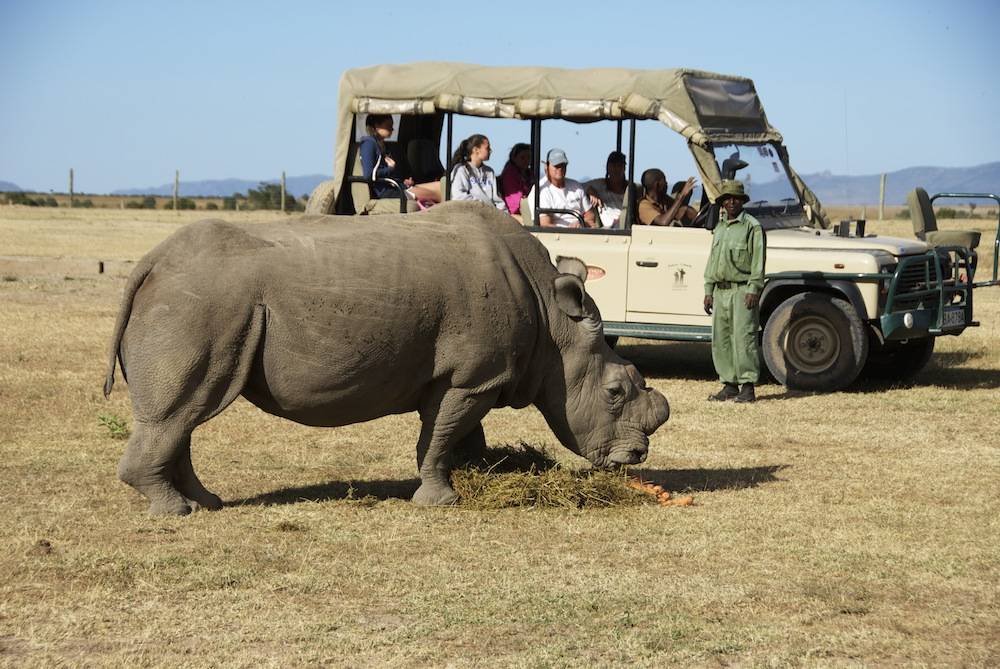Nairobi National Park is located in the heart of Nairobi, the capital metropolis of Kenya.…

Lake Nakuru National Park
Lake Nakuru National Park, sometimes known as “Pink Lake,” is home to large flocks of flamingos. It is one of Kenya’s greatest national parks, located along the Great Rift Valley and surrounded by granite rift valley escarpments. The park is situated in the north-west of Kenya’s capital city, Nairobi. It is located on the good tarmac route that leads to Kenya’s neighbouring country Uganda, only 170 km from Nairobi.
The park covers an area of 188 square kilometres and was established in 1961 with the primary goal of conserving flamingos and the lake. The lake is called after the adjacent town of Nakuru, which means dust in the Masai language. The park began small before expanding to include the neighbouring volcanic highlands and wide savannah areas around Lake Nakuru. Lake Nakuru National Park is located at an elevation of approximately 1,754 meters above sea level. Lake Nakuru is one of Kenya’s 23 national parks, classified as premium parks.
The park’s major feature is the shallow alkaline lake, which attracts thousands of flamingos, including Lesser and Greater flamingos, earning it the nickname Pink Lake. The park is home to four of Africa’s big five species, including rare black and white rhinos. Lions, leopards, and buffaloes are among the other African big five animals found in the park. Over 50 species of mammals live permanently in the park, including zebras, African wild dogs, eland, waterbuck, and many others. The park features around 400 bird species, including great pelicans, flamingos, starlings, lovebirds, several dove kinds, and unique birds.
The Lake Nakuru National Park has been enlarged to the southeast to include Soysambu Conservancy, which is home to black and white rhinos. Congratulations to the Kenyan Wildlife Service for working tirelessly with Masaai communities to safeguard black rhinos. By 2009, the number of black rhinos had risen to more than 25 in Nakuru National Park alone, together with 70 white rhinos and hundreds of Rothschild’s giraffe.
The Climate of Lake Nakuru National Park
The park’s climate remains reasonably consistent throughout the year, neither excessively hot nor too cold. The climate in the area varies from subhumid to semi-arid. Despite having two rainy seasons every year, the rainfall is evenly spread throughout the year. Because the park is close to the Equator, the nights are always cooler than the days, even though the days are hot. Warm clothes are essential for early morning game drives, and light clothing during the day.
The wet season lasts from March to May, with a brief period in November, while the rest of the year is dry. The greatest time to visit Lake Nakuru National Park is during the dry season, when animals tend to congregate around water catchment areas.
How To Get To Lake Nakuru National Park
The park gates are open from 7 a.m. to 6 p.m. and can be reached by both road and air. The park is located on the Nairobi-Nakuru highway, a 3-hour journey from the capital Nairobi. The trip is more scenic than the aeroplane, especially with a halt at the Great Rift Valley View. The Kenyan government has constructed well-tarmacked roads that connect to the park, making it possible to explore all areas of the park even with a two-wheel safari car. If one does not want to spend long hours in a safari car, the option of flying is accessible. Every day, domestic flights travel from Wilson Airport to Lake Nakuru National Park. The park is also connected to other national park airfields in Kenya. The flight from Nairobi to Lake Nakuru National Park takes only 25 minutes and lands at the Naishi airstrip within the park.

What to Do in Lake Nakuru National Park?
When guests visit the Park, they can participate in a variety of activities. The following are the key activities:
Game drives
The best way to see animals is to go on a game drive in the park. Depending on the local tour operator you choose, you will be guided by an expert driver-guide. The game drive provides you with a picturesque view of nature in the park, where you may see various African species, including four of the five African Big Five: rare black and white rhinos, buffalo, lions, and leopards. Other creatures include Giraffes, Hyenas, African Wild Dogs, and others.
Bird watching
The park is a birder’s delight, with over 450 bird species ranging from vultures, secretary birds, and thousands of great and lesser flamingos. Woodlands and wide savannahs attract a higher number of endemic and migratory bird species. Lake Nakuru National Park is one of Kenya’s top premium parks, with several rare animal species on offer to visitors.



